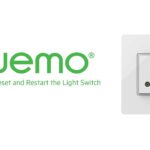Choosing the right sealant can feel like picking a needle in a haystack. You want something that sticks, lasts, and doesn’t break the bank.
Enter the contenders: Polyseamseal and Silicone. Each promises to be the solution to your sealing needs, but which one truly delivers? Imagine saving time, money, and frustration by picking the perfect product from the start. Picture the satisfaction of a job well done, knowing you made the best choice.
Dive into this guide to unravel the strengths and weaknesses of Polyseamseal vs. Silicone. By the end, you’ll have the clarity and confidence to make an informed decision for your next project. Ready to discover which sealant is your perfect match? Read on.
Understanding Polyseamseal
Polyseamseal is a versatile sealant widely used in construction. It provides strong adhesion and flexibility. Many homeowners and builders prefer it for sealing projects. Its unique blend ensures durability and easy application. Understanding its features can help in deciding its suitability for your needs.
Features Of Polyseamseal
Polyseamseal offers excellent adhesion to most surfaces. It can be applied on wood, glass, and metal. The sealant remains flexible even after drying. This flexibility prevents cracking. Polyseamseal is also resistant to mildew. It keeps areas clean and hygienic.
Another feature is its paintability. Once dry, you can paint over it. This allows for a seamless finish. Polyseamseal is easy to clean. You can remove it with water when wet. This makes post-application cleanup simple.
Applications And Uses
Polyseamseal is perfect for kitchen and bathroom projects. It seals sinks, tubs, and countertops effectively. Use it around windows and doors. It prevents drafts and moisture entry. Polyseamseal is also ideal for outdoor use. Seal cracks in walls and foundations.
Many use it for small repairs. It fills gaps in tiles and flooring. Its versatility makes it a go-to choice. Polyseamseal is suitable for both professional and DIY projects. The ease of use appeals to beginners and experts alike.

Credit: www.ekenamillwork.com
Exploring Silicone Sealants
Silicone sealants are a versatile choice for many DIY projects and home repairs. You’ve probably seen them in action, sealing gaps around windows or in bathrooms. But what makes silicone so popular, and how does it stand out compared to other sealants like Polyseamseal? Let’s dive into the world of silicone sealants and uncover their unique characteristics and practical benefits.
Characteristics Of Silicone
Silicone sealants are known for their flexibility and durability. They can withstand extreme temperatures, making them ideal for both indoor and outdoor use. Their elastic nature allows them to absorb movement without cracking.
This makes silicone perfect for areas subject to expansion and contraction. Unlike some other sealants, silicone remains effective in wet environments. Think about your shower or kitchen sink; silicone can handle the moisture without losing its grip.
Common Uses And Benefits
Silicone is a go-to for sealing joints in bathrooms, kitchens, and even aquariums. Its waterproof quality is unmatched, providing long-lasting protection against leaks. Have you ever noticed that silicone seems to last forever? That’s because it resists UV rays, ensuring it doesn’t degrade under sunlight.
Beyond its traditional uses, silicone can also be painted over. This is a game-changer if you’re looking to blend the sealant with your decor. Plus, it’s available in various colors, letting you match it with your personal style.
Consider your next project: could silicone sealants offer the flexibility and resilience you need? Whether you’re fixing a leak or updating your home, they might just be the solution you’ve been searching for.
Performance Comparison
Polyseamseal and silicone sealants have distinct features. Polyseamseal offers excellent adhesion and flexibility, suitable for various surfaces. Silicone provides superior water resistance, ideal for bathrooms and kitchens. Each has its strengths, making them suitable for different applications and preferences.
Polyseamseal and silicone are both popular choices for sealing and caulking needs. But how do they stack up against each other? Understanding their performance can help you make the right choice for your project. Whether you’re fixing up your bathroom or sealing a window, the effectiveness of your sealant can make a big difference. Let’s dive into the performance aspects of these two products to see which one might be the best fit for your needs.Durability And Longevity
When it comes to durability, silicone often takes the lead. It can withstand extreme temperatures and remains flexible over time. This makes it ideal for outdoor applications where weather conditions can be unpredictable. Polyseamseal, on the other hand, is known for its strong adhesion to a variety of surfaces. While it might not handle extreme conditions as well as silicone, it provides reliable performance for indoor use, especially in areas prone to moisture like bathrooms and kitchens. Consider your project’s environment. Is it exposed to harsh weather or temperature changes? Silicone might be your best bet for long-lasting results.Ease Of Application
Silicone can be a bit tricky for beginners. It requires careful application to avoid mess and ensure a smooth finish. Have you ever tried using silicone and ended up with sticky hands and uneven lines? You’re not alone. Polyseamseal is more forgiving and easier to apply, making it a favorite among DIY enthusiasts. It can be painted over once dry, offering more flexibility in finishing touches. Think about your comfort level with DIY projects. If you’re looking for a straightforward application process, Polyseamseal might save you time and frustration. Both Polyseamseal and silicone have their strengths. What features are most important to you? Whether it’s durability or ease of use, knowing what you need can guide your choice.Resistance To Elements
Polyseamseal offers strong resistance to water and moisture, making it ideal for indoor sealing tasks. Silicone provides excellent durability against extreme temperatures, often preferred for outdoor applications. Choosing between Polyseamseal and silicone depends on specific environmental needs.
When you’re choosing between Polyseamseal and silicone sealants, a crucial factor to consider is how well they stand up to the elements. Whether you’re sealing a bathroom, kitchen, or outdoor project, understanding their resistance can save you from future hassles. Let’s dive into the specifics of how each performs when exposed to water, temperature changes, and varying weather conditions.Waterproofing Capabilities
Polyseamseal offers impressive waterproofing features. It creates a strong seal that prevents water from seeping through, perfect for areas like showers and sinks. Silicone sealant, however, is renowned for its superior waterproofing abilities. It’s often the go-to choice for underwater applications and areas with constant water exposure. Have you ever tackled a bathroom renovation and worried about mold? Silicone might be your best bet to keep moisture at bay and your bathroom mold-free.Temperature And Weather Impact
Polyseamseal performs well in moderate temperatures but can struggle in extreme conditions. It’s suitable for indoor projects where temperature fluctuations are minimal. Silicone sealant shines in its ability to withstand both high heat and freezing temperatures. Its flexibility remains intact, making it ideal for outdoor use where weather changes are frequent. Think about that garden fountain you want to seal. Silicone can maintain its integrity even when winter frost or summer heat hits hard. Choosing the right sealant isn’t just about immediate needs. It’s about predicting the challenges your project will face over time. How much peace of mind would you gain by knowing your sealant can handle the harshest elements?Environmental Considerations
Polyseamseal and silicone sealants both play key roles in construction, but they differ in environmental impact. Polyseamseal offers lower VOC emissions, making it a more eco-friendly option. Silicone, on the other hand, is known for durability but can have higher chemical emissions.
When choosing between Polyseamseal and silicone for your home projects, it’s important to consider the environmental impact of each product. These considerations not only affect the planet but also influence the health and safety of your household. Let’s explore how each option measures up in terms of eco-friendliness and health implications.Eco-friendliness
Polyseamseal is often lauded for its eco-friendly properties. It’s typically water-based, which means it has a lower carbon footprint compared to its silicone counterpart. This can be a compelling choice for those aiming to reduce their environmental impact. Silicone, on the other hand, is derived from non-renewable resources. Its production involves more energy-intensive processes, which contribute to higher greenhouse gas emissions. However, silicone is incredibly durable, which means fewer replacements and less waste over time. Think about this: Would you prefer a product that’s initially more eco-friendly, or one that may have a longer lifespan? Your decision here can reflect your broader environmental values.Health And Safety
When it comes to health and safety, Polyseamseal tends to emit fewer volatile organic compounds (VOCs). Low VOC emissions are crucial, especially if you have young children or pets at home. Breathing in fewer chemicals can contribute to a healthier indoor environment. Silicone sealants may release more VOCs, particularly during application and curing. Adequate ventilation is essential to mitigate any potential health risks. It’s wise to consider how often you can open windows or use fans during the application process. Reflect on your personal experiences: Have you ever felt lightheaded or dizzy while working with sealants? This could be a sign to pay more attention to the products you choose. Ultimately, weighing the environmental considerations of Polyseamseal versus silicone involves balancing immediate eco-friendliness with long-term durability and safety in your home. Which factors hold the most weight in your decision-making process?Cost Analysis
Polyseamseal and silicone both seal but differ in cost effectiveness. Polyseamseal offers affordability with versatility. Silicone provides superior durability, ideal for high-moisture areas. Comparing costs helps in choosing the right sealant for specific needs.
When it comes to choosing between Polyseamseal and silicone, understanding the cost implications can significantly influence your decision. The initial expense might not be the only factor to consider; long-term savings and overall value also play crucial roles. Let’s dive into a cost analysis that could save you both time and money.Price Comparison
If you’re looking at the price tag alone, silicone might appear cheaper at first glance. A standard tube of silicone sealant can often be found at a lower price compared to Polyseamseal. However, does a lower upfront cost guarantee long-term savings? Polyseamseal, while slightly pricier, offers a unique blend of properties that could justify the initial investment. For example, its paintable feature means you won’t need additional products to match your wall color, saving you extra trips to the hardware store.Value For Money
The value you get from each product extends beyond the sticker price. Silicone is durable and resistant to harsh weather, but it can be challenging to remove and replace. Imagine having to redo your sealant work because it didn’t adhere well or started peeling. That’s time and effort down the drain. Polyseamseal, on the other hand, is known for its superior adhesion and flexibility. This makes it an excellent choice for areas prone to movement, like around windows and doors. It might cost a bit more upfront, but think about the peace of mind knowing your seal will last longer without frequent touch-ups. Have you ever bought something cheaper only to find it cost you more in the long run? When you factor in the time and resources needed for maintenance or replacement, Polyseamseal could prove to be the wiser investment. In your sealing projects, consider not just the immediate cost, but the overall value. Would you rather spend a little more now and gain durability and convenience, or go the cheaper route and risk additional expenses later?User Feedback
Choosing between Polyseamseal and silicone involves understanding user feedback. Polyseamseal offers flexibility and paintability. Silicone provides superior water resistance, making it ideal for wet areas. Both have their strengths, depending on the project’s needs.
Understanding user feedback is crucial when choosing between Polyseamseal and Silicone. Both products have their own set of loyal users, each touting different benefits and drawbacks. Let’s dive into what people are saying about these sealants.Consumer Reviews
Consumers often highlight Polyseamseal for its ease of use. Many appreciate how it cleans up with water and doesn’t require a special solvent. One user mentioned applying it around their bathroom sink and loving how it dried quickly without any strong odors. Silicone, on the other hand, is praised for its durability. Users in coastal areas often choose silicone because it withstands extreme weather conditions. A homeowner shared that their silicone-sealed windows held up perfectly against heavy rain and wind. However, some find silicone difficult to work with. It can be messy, and mistakes are hard to correct. Have you ever faced a similar challenge when using sealants?Professional Opinions
Professionals in construction and home improvement provide a different perspective. Many recommend silicone for exterior projects, thanks to its long-lasting nature. A contractor mentioned using silicone on roof edges, citing its ability to resist UV rays and temperature changes. Polyseamseal is often favored by professionals for indoor projects. It’s flexible and adheres well to various surfaces. A seasoned handyman shared that Polyseamseal is his go-to for sealing gaps in wooden floors due to its paintability and smooth finish. Yet, some pros caution about compatibility issues. Silicone may not bond well with certain materials, leading to poor adhesion. It’s essential to know your project’s needs and choose accordingly. Have you ever considered consulting a professional for your sealing tasks? By understanding these insights, you can make an informed decision. Whether you prioritize ease of use or durability, there’s a sealant that fits your needs. What are your priorities when selecting a sealant?
Credit: www.amazon.com
Best Use Cases
Choosing the right sealant can make a big difference. Polyseamseal and silicone are two popular options. Each has its own strengths. Knowing where to use them is crucial. This guide will help you decide. Let’s dive into the best use cases for each.
Home Repairs
Polyseamseal is great for home repairs. It bonds well with various surfaces. Use it for sealing windows and doors. It’s ideal for kitchens and bathrooms. It resists mildew and stays flexible. This makes it perfect for areas with moisture.
Silicone is another option for home repairs. It’s excellent for high-temperature areas. Use it around ovens or water heaters. Silicone is also good for aquariums. It remains waterproof and durable. Choose silicone for long-lasting results.
Industrial Applications
In industrial settings, durability is key. Polyseamseal works well for metal joints. It provides a strong bond. Use it in factories or warehouses. Its versatility is a plus. Polyseamseal can handle different materials.
Silicone shines in industrial applications too. It’s resistant to extreme temperatures. Use it in environments with high heat. Silicone is great for sealing pipes. It offers excellent chemical resistance. This makes it suitable for harsh conditions.

Credit: www.youtube.com
Frequently Asked Questions
What Is Polyseamseal Used For?
Polyseamseal is used for sealing gaps and joints. Ideal for bathrooms and kitchens. It provides a durable finish.
How Does Silicone Sealant Differ From Polyseamseal?
Silicone is more flexible and waterproof. Polyseamseal offers better adhesion on various materials. Both have specific uses.
Can Polyseamseal Be Painted Over?
Yes, Polyseamseal can be painted over. It accepts most paints. Ensure it is dry before painting.
Is Silicone Better For Outdoor Use?
Silicone is excellent for outdoor use. It’s weather-resistant and durable. Ideal for windows and roofs.
Which Is Easier To Apply, Polyseamseal Or Silicone?
Polyseamseal is easier to apply. It adheres well and cleans up with water. Silicone requires more skill.
Conclusion
Choosing between Polyseamseal and silicone depends on your needs. Polyseamseal offers versatility for various applications. Silicone excels in waterproofing and durability. Consider your project type and environment. Polyseamseal might suit interior repairs. Silicone could be better for outdoor sealing. Both options provide strong adhesion.
Evaluate your priorities for a successful result. Cost, performance, and longevity are key factors. Make informed decisions based on your specific requirements. Each material has its strengths. Your choice impacts the quality and lifespan of the seal. Select wisely for lasting satisfaction.



